Invented by Matthew R. Yoder, Bo Zhang, Gary P. Kivi, Richard A. Sanden, Medtronic Inc
Telemetry connections are used to transmit data from medical instruments to remote units, such as smartphones, tablets, or computers. This data can include vital signs, medication information, and other important medical data. The integrity of these connections is critical to ensure that the data is transmitted accurately and securely.
There are several factors driving the growth of the market for facilitating the integrity of telemetry connections. One of the main drivers is the increasing adoption of telemedicine. Telemedicine allows healthcare providers to remotely monitor patients and provide care without the need for in-person visits. This has become especially important during the COVID-19 pandemic, as many patients are hesitant to visit healthcare facilities in person.
Another factor driving the market is the increasing use of medical devices that rely on telemetry connections. These devices include implantable devices such as pacemakers and insulin pumps, as well as wearable devices such as fitness trackers and smartwatches. As the use of these devices continues to grow, the need for reliable telemetry connections becomes even more important.
The market for facilitating the integrity of telemetry connections is highly competitive, with many companies offering solutions to improve the reliability and security of these connections. These solutions include encryption and authentication technologies, as well as software and hardware solutions that can detect and prevent data breaches.
One of the key challenges facing companies in this market is ensuring that their solutions are compliant with regulatory requirements. In the United States, medical devices and their associated telemetry connections are regulated by the Food and Drug Administration (FDA). Companies must ensure that their solutions comply with FDA regulations to ensure that they are safe and effective.
In conclusion, the market for facilitating the integrity of telemetry connections between a medical instrument and a remote unit is growing rapidly. With the increasing demand for telemedicine and remote patient monitoring, the need for reliable and secure telemetry connections has become paramount. Companies in this market must navigate regulatory requirements and develop innovative solutions to meet the needs of healthcare providers and patients.
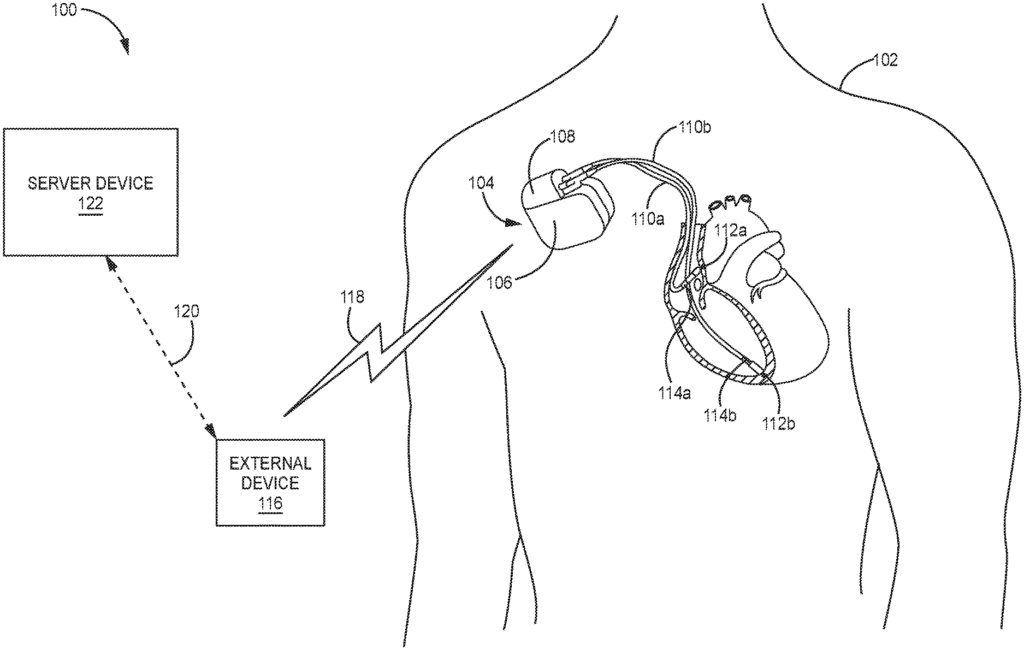
The Medtronic Inc invention works as follows
Systems and methods, as well as computer-readable media, are provided that allow for the monitoring of the integrity and telemetry connectivity between a device implanted and an external device. In one embodiment, the implantable devices includes a component for monitoring advertisement signal information that identifies the amount of advertisement signals that were transmitted to the external unit within a specified time period and telemetry information that identifies the amount of telemetry sessions established between the external and implantable devices within that defined period. The connectivity assessment component determines if there is a problem with telemetry between the external device, and the implantable devices based on the degree of miscorrelation of the advertisement signal and telemetry session data.
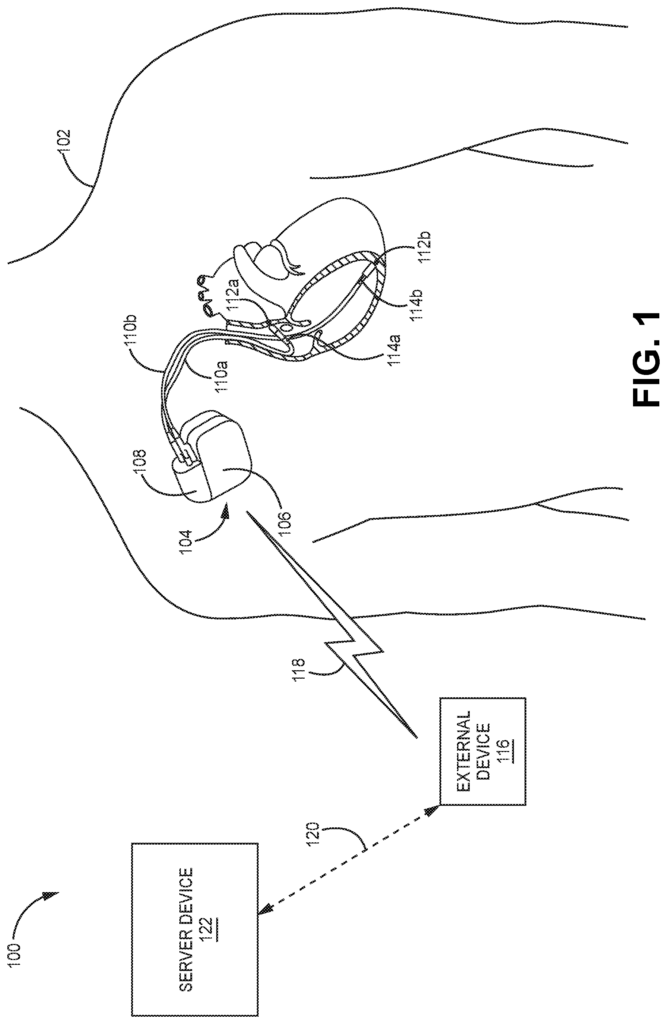
Background for Facilitating the integrity of telemetry connections between a medical instrument and a remote unit
Modern healthcare allows patients to live a healthy and fulfilling life. Implantable medical devices are frequently used for medical advancements. For example, IMDs such as pacemakers, implantable cardioverter-defibrillators (ICDs), neurostimulators, and drug pumps can facilitate management with a wide range of ailments, including, but not limited to, cardiac arrhythmias, diabetes, and Parkinson’s disease. Modern IMDs have been entrusted to perform vital tasks, such as collecting vital sign data and providing it via telemetry communication to doctors and nurses. In many applications, vital data is automatically and regularly communicated between an Implantable Device and a Remote Device, such as the remote device that can be accessed by the patient or caregiver wearing the implantable devices. The integrity of the telemetry connection between the implantable and remote devices is therefore important.
The following is a simplified overview of one or several embodiments, including but not limited, a basic understanding one or multiple embodiments. This summary does not provide an exhaustive overview of the embodiments. This summary is not intended to identify critical or key elements of the described embodiments, nor to define the scope of any embodiments or claims. The purpose of this document is to simplify some key concepts in the embodiments as a precursor to a more detailed description. The detailed description may also include alternative or additional embodiments than those described in Summary.
The embodiments described herein include computer-readable media, apparatus and methods that enable the monitoring of the integrity and telemetry connectivity between a device implantable and an external device. In some embodiments the implantable device includes or is an IMD. In some embodiments, the device that is implanted can be an IMD or a device designed to interact with it. Both the IMD and the implantable device can be implanted in a patient.
In one embodiment, a device implantable is provided. The implantable device may include: a storage memory for executable components, and a processor coupled with the memory to execute the executable component stored in the storage memory. The executable components may include a component that monitors advertisement signal information, identifying the amount of advertisement signals sent from the implantable to the external device in a given time period. Another component can monitor telemetry session data, identifying the amount of telemetry connections established between the implantable and external devices within the same time period. The implantable devices can also include a connectivity component that is configured to assess whether there is a problem with telemetry between the implantable and external devices based on a certain number of discovery events occurring within a defined period of time or a ratio between the number of telemetry session established between the implantable and external device during the defined period of time.
In one embodiment, if the number of events detected is less than the threshold or if the ratio is less than the threshold, then the connectivity assessment component will determine that there’s a telemetry problem between the external device (the device) and the implantable device.
The components of the implantable devices can also include notification components configured to generate notifications indicating that a telemetry connectivity issue exists between the external device (and the implantable) based on the determination that the number is lower than the threshold number, or the ratio below the threshold ratio. The notification component may also send the message to the external unit for rendering or relaying by the external unit to another device.
In another embodiment, an implantable system can have a configuration component that is configured to receive commands instructing it to reconfigure the telemetry protocol used by the implantable system to communicate with the external unit based on the determination that the amount of advertisement signals received by the external unit from the implantable in the defined period of time falls below a threshold value.
In another embodiment, there is a method. The method may include monitoring, using a device with a processor included, telemetry connection information, including advertisement signal data identifying the times at which advertisement signals from an implantable devices are received. The device can determine, based on the amount of advertisement signals received in a given time period, whether there is a telemetry connection error condition associated with performing telemetry communications between the device an implantable device. The device can also generate a notification that identifies the telemetry error condition in response to a determination of the existence of the error condition.
In one embodiment, determining the existence of a telemetry connectivity problem condition is based on a threshold amount for the number of advertisement signals received during the time period defined. In some embodiments the method includes at least one of rendering the notification by the device at the device or transmitting the notification by the device to another device. The other device may include the implantable device.
In one embodiment, determining the error condition of telemetry connectivity is also based on the time interval between the reception of two or three of the advertising signals exceeding a threshold period.
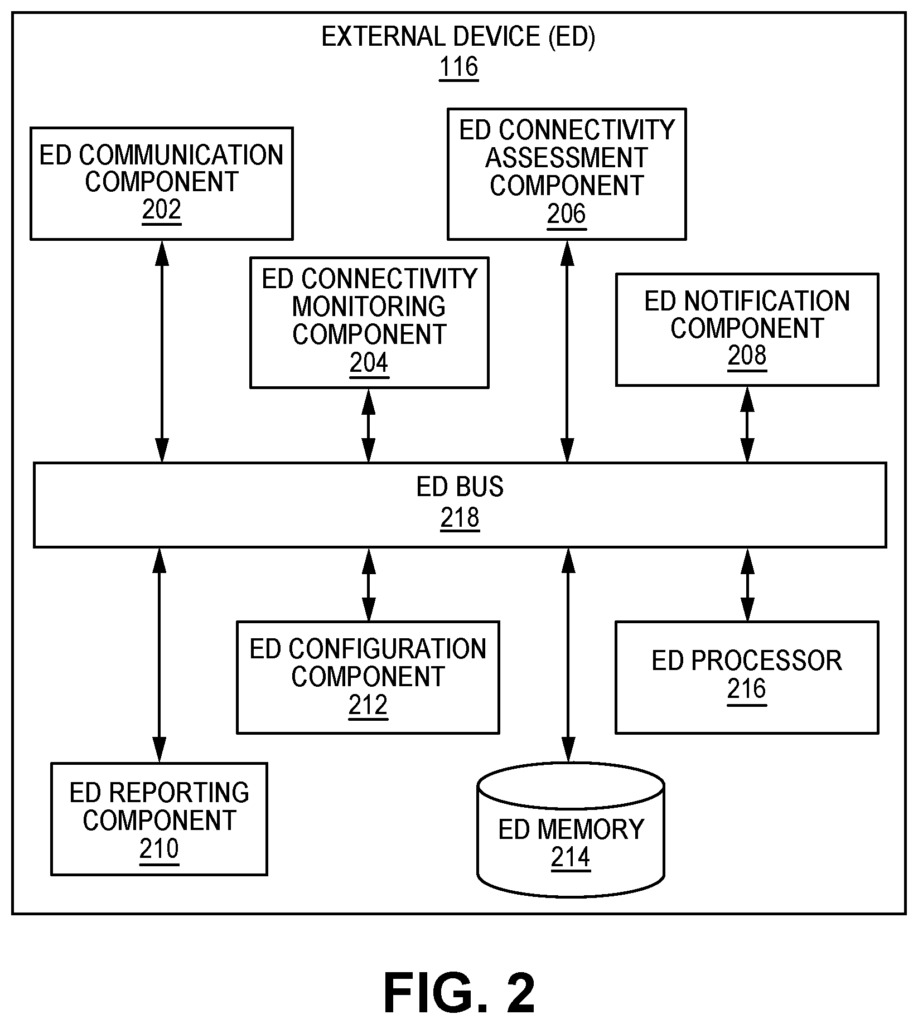
In some embodiments, telemetry information may also include telemetry session data identifying the number of telemetry connections established between the implantable device and the device during the time period defined. “The telemetry error condition can also be determined by a percentage value that represents the number of telemetry session established in relation to the quantity of advertisement signals received, if the percentage value is less than a threshold value.
In yet another embodiment a system is presented. The system may include an implantable unit configured to transmit advertising signals via a defined protocol of telemetry communication. The system may also include an implantable device configured to transmit advertisement signals using a defined telemetry protocol. In addition, the external device can facilitate determining if a telemetry connection error condition is present in relation to performance of the telemetry communications with the implantable devices based on an evaluation of the advertisement signals information with respect the defined telemetry protocol. In some embodiments, a server device can be included in the system, with the external device configured to send advertisement signal information to it and the server configured to evaluate the data. The server device, for example, can determine the existence of a telemetry connectivity problem based on the determination that the advertisement signal amount received is less than a threshold amount.
In some embodiments, the notification component is configured to send a message identifying the error condition in telemetry connection if it determines that the error condition is present. The device’s communication component can be configured to send the notification to an additional device, such as an implantable device or server device. In one embodiment, telemetry information can also include information about telemetry sessions identifying the number of telemetry connections established between the implantable device and the device during the time period. In this implementation, a connectivity assessment component determines that a telemetry error condition exists by comparing a percentage of advertisement signals received to the number of telemetry sessions set up.
Below, we describe in greater detail “Other embodiments” and non-limiting scenarios and implementations. The drawings and description below illustrate certain illustrative examples of the specification. The following embodiments represent only a small number of possible ways to apply the specifications. The following detailed description will reveal other advantages and novel features in the embodiments when viewed with the drawings.
The following detailed description, while illustrative, is not meant to limit the application of embodiments or their uses. The Detailed Description, Technical Field, Background, and Summary sections are not intended to be binding.
One or more embodiments will be described in detail with reference to the illustrations, using like numerals to denote similar elements. For the purpose of explaining, a number of specific details will be provided in the following description. This includes, but is not limited to, providing a better understanding of one or more embodiments. In some cases, it is obvious that these details are not necessary.
The following description also refers to the components as being “connected” and/or ?coupled? ?connected? As used in this document, unless otherwise stated, the term ‘connected’ is a generic term. and/or ?coupled? The term “coupled” means that one component can be directly or indirectly coupled to another component mechanically, electrically (wirelessly), inductively (inductively) or any other way. “Thus, even though the figures may depict examples of component arrangements, additional components and/or intermediary components can be present in some embodiments.
Referring now to the figures, FIG. The figure 1 shows a schematic diagram for an example non-limiting medical device telemetry device 100 that is used to monitor the integrity of telemetry connections between an implantable and external device, in accordance with a number of embodiments described. Medical device telemetry 100 in the embodiment shown includes an external device (116) and an implantable device (104). The server device 122, which is shown in FIG. In some embodiments the medical device Telemetry System 100 may include both the external device and the implantable device, but not the server device.
In some embodiments, an IMD is used to perform one or more diagnostic and treatment functions in relation to the body 102. In some embodiments, the IMD is not shown here. The implantable device is a separate IMD that is implanted in the body 102. It is electrically or communicatively coupled with the IMD.
Embodiments” of devices, systems and apparatus can include one- or more machine-executable component(s) embodied inside one or multiple machines (e.g. embodied on one or several computer-readable storage mediums associated with one- or multiple-machines). These components can be executed by one or more machines. The one or more machines can perform the described operations when these components are executed by them (e.g., processors, computers, computing devices etc.).
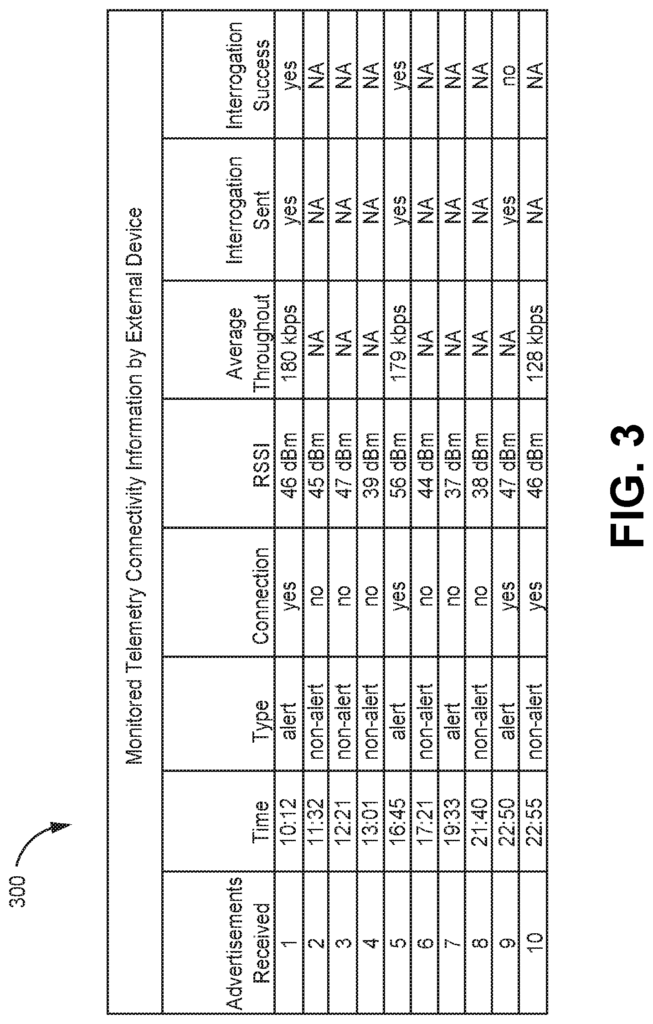
Click here to view the patent on Google Patents.
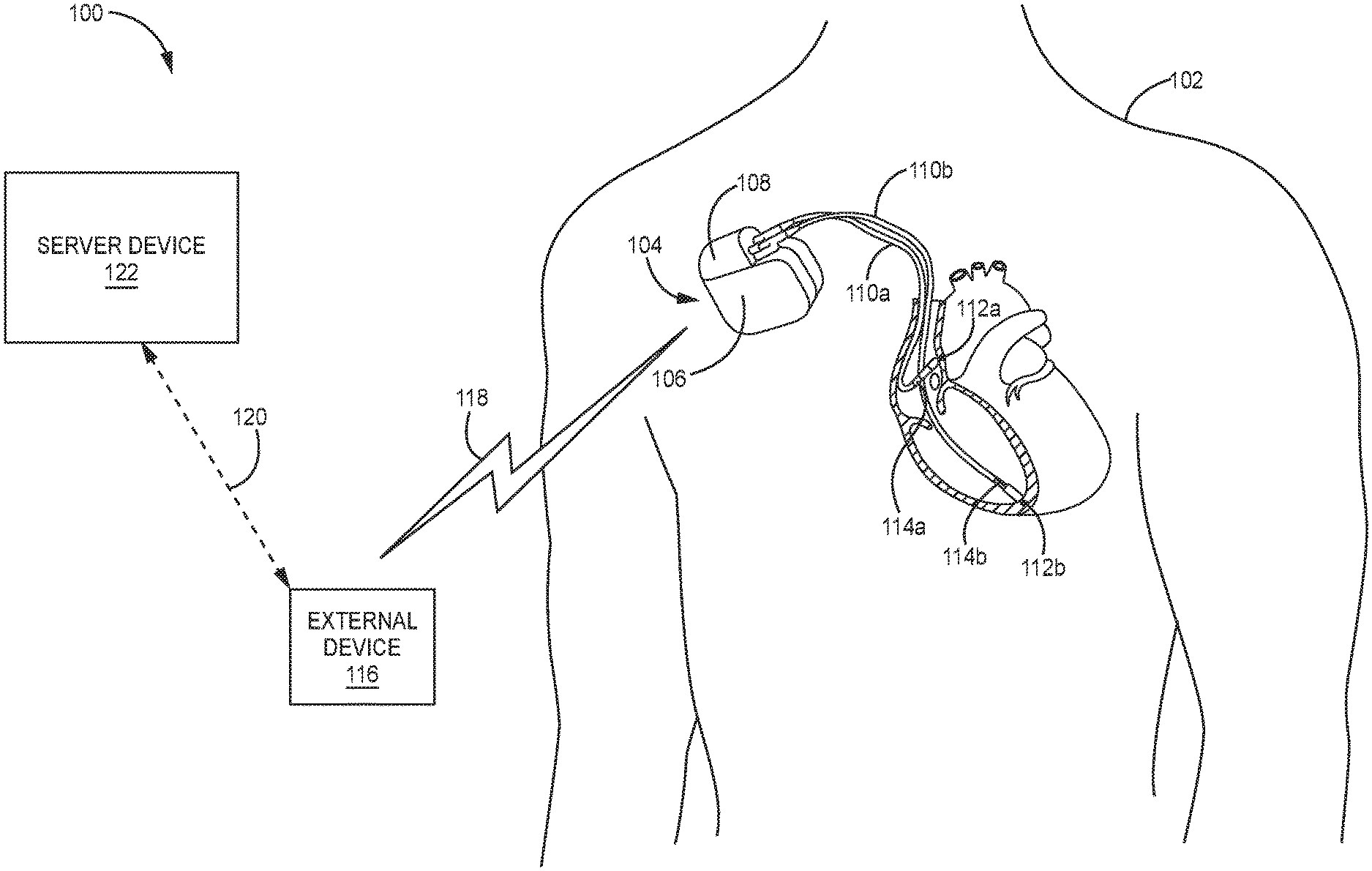
Leave a Reply